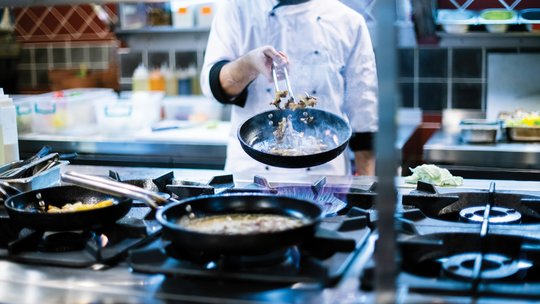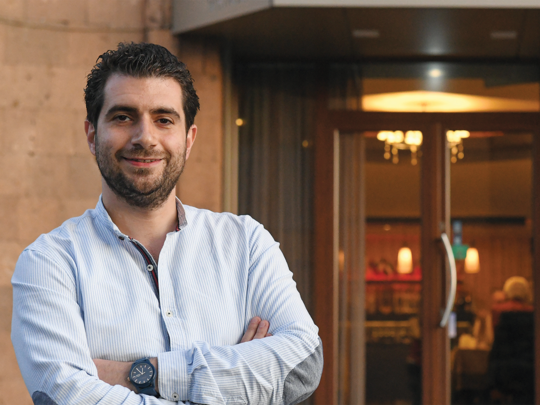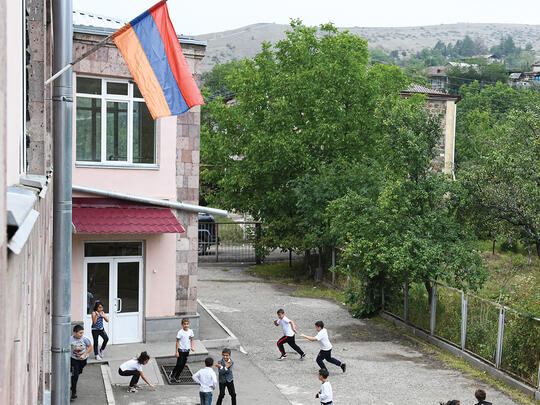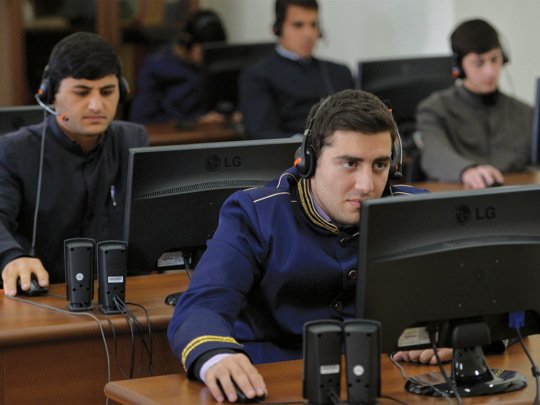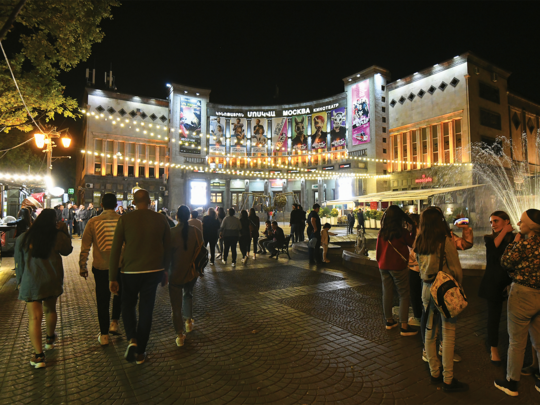Perched high atop the dizzying 12th floor of Marriott Inter-national’s The Alexander hotel in the heart of Yerevan, Italiano Ristorante offers a bird’s eye view on the capital’s rapidly shifting gastronomic landscape. With new eateries, cafés and fine dining establishments popping up across Yerevan almost by the day, Italiano is just the latest expression of a booming restaurant industry propelling a dynamic economy in the making.
From calamari with Livornese sauce and polenta to Uzbek plov and Asian spring rolls, the globalization of Armenia’s cuisine means Yerevanites are sure to expand their culinary horizons, while restaurateurs will be compelled to diversify their menus to satisfy the public’s appetite for new gastronomic adventures.
Meanwhile, the opening last April of a culinary art and hospitality academy—a first for the country—attests to an increasingly demanding client no longer satisfied with the mechanics of old.
For David Yeremyan of Yeremyan Projects, the company behind the academy and seven more restaurant brands including Pandok Yerevan and Pandok Yerevan Riverside, Yerevan Shaurma, Lavash, Sherep, and more recently Smoking Chef and Livingston, this is as much a result of Armenia’s awakening to the outside world from its Soviet slumber as it is of society’s growing preference for eating out in the past few years.
“Because more and more people have grown accustomed to eating outside of the home, their standards of quality food and service have also gone up,” says Yeremyan, adding that these are the kind of expectations that are pushing the industry to develop and improve, and which the academy wants to impress upon its cooks and waiters-in-training.
Professionalizing Service
Capped at 200,000 AMD (just above $400 USD) per month, the academy provides six months of quality training and practice to “the expert cooks and waiters of tomorrow,” according to Yeremyan—a sore point for an industry rife with self-taught professionals. Two-month courses for the more experienced in the field are also on offer at the academy.
Tigran Manukyan, a September inbound of the academy set to complement the ranks of its first graduating class by next February, says “the academy provides the motivation and the knowledge to pursue a career in the culinary field well beyond Armenia’s borders.”
To do this, Yeremyan Projects has teamed up with City of Oxford College, a member of the Activate Learning group based in the UK, to help “draw up curricula, boost teaching staff efficiency and guarantee student and teacher mobility,” explains the company’s general director. And while the academy has yet to receive state accreditation, Yeremyan hopes to see the academy become a recognized institution of higher learning soon.
Working in tandem with the private sector and a plethora of international organizations, the post-revolutionary government of Nikol Pashinyan is developing its own national strategy to boost tourism in Armenia—one it says is mindful of the country’s gastronomic potential.
“It’s no secret that local cuisine remains the most positive experience for many tourists visiting Armenia,” says Susanna Safaryan, president of the State Tourism Committee in charge of the strategy.
Short of developing its own blueprint for a gastronomy-driven tourism, the committee helps direct foreign investment toward priority sectors like recreational tourism that incorporates gastronomy as a main driver. It also provides guidance and the occasional small grant to private initiatives vested in developing a national culinary brand.
One such initiative is the United Nations Development Program’s (UNDP) gastro yards, home businesses that have been sprouting up across rural Armenia, to offer local foodstuffs and wine to tourists craving a taste of the countryside. The yards are part of the Integrated Rural Tourism Development project funded by the Russian government and implemented in close partnership with the government of Armenia.

Town Versus Country
This upward gastronomic trend has been largely confined to the capital, leaving the rest of the country to stew in its more traditional culinary habits. Even those few like Varuzhan Babakhanyan of Hover boutique hotel and restaurant in Dilijan, who dared attempt European cuisine in the Armenian countryside, have had to revert to the familiar fare of old for lack of engagement with foreign tastes by his more conservative patrons.
“I don’t believe Hover has the power to change local eating habits, neither is it really our objective, despite their great potential for development,” says Babakhanyan.
The issue is compounded by the crippling absence of a qualified service personnel coupled with an underdeveloped culture of eating out.
“For many, going to a café is still a luxury,” says Pierre Bagdadian, a French-Armenian entrepreneur from Beirut who moved to Armenia in 2010 to establish Pascal and Diodato café in Ashtarak, some 20 kilometers outside Yerevan. Together with his brother Diran, who repatriated some five years earlier from Austria, the Bagdadians are also the masterminds behind Gourmet Dourmé, the chocolate house introducing Armenians to high-end chocolaterie since 2007.
Sitting against the backdrop of one of Ashtarak’s main tourist attractions—the red-tile-roofed Karmravor church—Pierre explains that the bulk of his customers are Yerevanites, looking to break away from the capital’s racket, and foreign tourists visiting the nearby church. “The town’s small population and its weak buying power mean that very few locals can afford a regular coffee at Pascal and Diodato and those who can usually represent a higher class of society,” says Bagdadian. The brothers will be opening a new location of the café in Yerevan in the new year.
The public catering industry in Armenia is also threatened by the recurrent stigmatization of its professionals despite accounting for 23,000 jobs or 4% of total national employment, according to Armenia’s Statistical Committee.
While the situation has somewhat improved in the capital, with long-time waiters like Tigran Zakharyan attesting to their better treatment by the average client, thanks to positive changes in society, many in the regions continue to see waitering as little more than a means to a quick buck—a shameful one at that.
“No one in the business wants to be treated like a servant,” says Babakhanyan, adding that the sentiment is more pronounced with young women, many of whose fathers and brothers consider it unbefitting of their daughter or sister to be waiting on others.
“All of this makes finding qualified personnel interested in pursuing a career in the field extremely difficult,” adds Babakhanyan.
A Seat at the Table
In Yerevan, the gastronomic trend was, until recently, threatened by a different monster—a new tax law set to dig deeper into the pockets of restaurateurs to contain surplus profit and combat monopolies, explained the government—a claim strongly rejected by the industry.
Drafted under the former government of President Serzh Sargsyan, the law swapped a meter square of occupied space-based patent fee with a 6% turnover tax on gross sales that would quickly jump to 8% in 2019 to reach a disruptive 10% by 2020.
The move saw the appearance of black and red “NO” posters at the doors of more than 150 cafés and restaurants across the country to protest the new tax system that “would have forced an abrupt 30% increase on all prices and reduced local consumption rates, while weakening Armenia’s tourism competitiveness in the region,” explains Ashot Barseghyan, co-president of the Armenian Restaurants Association (ARA), that brings together some 300 businesses to stimulate Armenia’s public catering industry and set up gastrotourism as one more economic driver.
Extended negotiations, including with the prime minister himself, and repeated threats from ARA to close down shop for a whole day convinced the government to settle on a 6% turnover tax until 2022, with promises to shave off an additional 3% on justified expenses on produce and other commodities.
The government has also pledged to take the necessary steps to document the market in a concerted effort to better regulate the industry and reduce the tax burden on restaurants, something Barseghyan claims it was until now trying to do at the expense of the industry. These concessions are reflected in the country’s new tax code applied since the beginning of last year.
With one of its heads gone, restaurateurs across Armenia are now confronted with a different hydra—a draft law prohibiting smoking in public areas that Barseghyan qualifies as “a collection of good intentions” rife with disruptive consequences for the public catering industry.
While a crushing majority of restaurant owners support banning smoking in their establishments despite their own propensity for it, according to a survey of some 300 restaurants, most remain strongly opposed to the law in its current form, which they claim is fraught with contentious formulations open to misinterpretation and corruption risks.
The law provides for a 750,000 AMD (almost $1,600 USD) fine for restaurant owners and a 50,000 AMD ($100 USD) fine for those found smoking on restaurant grounds, but remains unclear about which governmental body will be responsible for enforcing the law and imposing fines.
“Instead of following-up on the existing law against public smoking and making sure that it is properly applied, the Ministry of Health has focused its efforts on a new law that basically requires restaurateurs to police their own clients—a client relationship killer,” says Barseghyan.
He also points to the example of Georgia, whose own ban on smoking in public areas has incurred serious customer and income losses measured at 50% in the case of some restaurants, while having little to no effect on deterring people from smoking, according to the country’s restaurants association. “Sterilizing the country is not the way to go,” says Barseghyan.
The ministry has until now lent a deaf ear to the association’s suggestions, despite repeated consultations between the two, and has convinced the government to push the law into parliament. Talks over the proposal have yet to be scheduled.
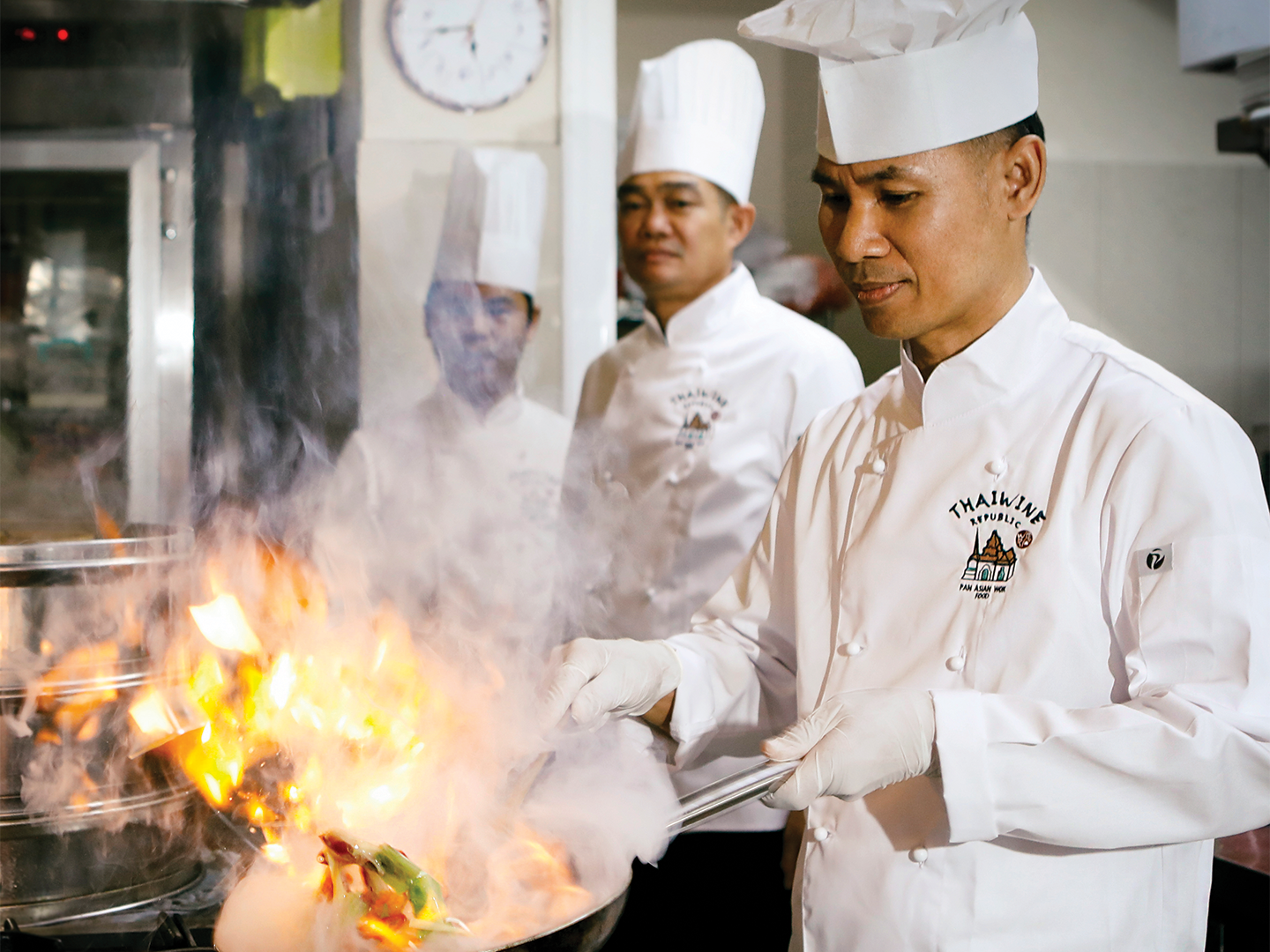
Serving the Nation
For all its ills, Armenia’s restaurant industry is on the rise.
Between 2014 and 2018, the food service sector grew by an impressive 26.1% with current market size exceeding the $240 million USD mark last year, while tourists have already spent 75 percent more in restaurants this year than in 2018, says Armenia’s Central Bank.
Thanks to the power of the Internet and international influencers like the United World College (UWC) in Dilijan, a growing contingent of 16-18-year-old progressive thinkers in the regions are defying public opinion in the interest of their financial independence, a movement, Hover’s Babakhanyan believes, that will only grow in time.
Refusing to lag behind the new generation, industry visionaries like Pierre Baghdadian have pledged to build on the legacy of Pasqua Harutyun Rosée and Johannes Diodato (Hovhannes Astvatsatur) to introduce a café culture worthy of its Armenian forefathers.
Meanwhile, Yeremyan Projects’ Farm-to-Table and Army projects are empowering Armenian farmers and soldiers on the frontlines and boosting national security by putting quality produce from the regions on the plates of the capital and the Army.
In the capital, Barseghyan predicts that a growing economy and a more intimate connection to the tourism sector will push the industry to new heights with new restaurants erupting on the scene to satisfy society’s growing preference for eating out.
“I believe insisting on culinary authenticity is problematic. It leads to a creative dead end,” says Barseghyan in defiance of the philosophy adopted by some of his more conservative colleagues. “Instead, Armenia would be well advised to lend an ear to the outside world and train the kind of cooks who will develop an Armenian culinary voice that isn’t necessarily rooted in the past.”
A Sampling of Yerevan’s Culinary Diversity
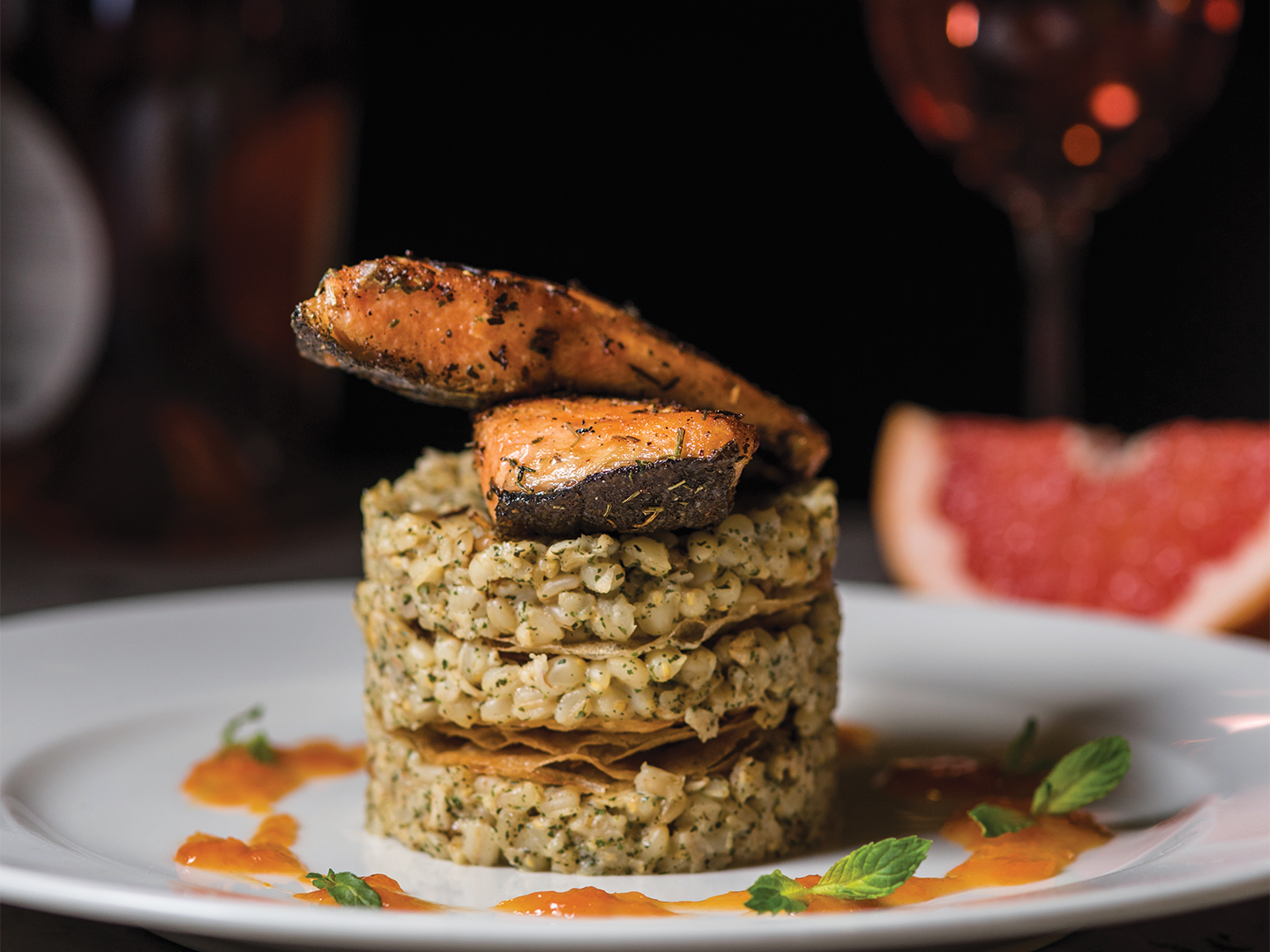
Anoush
7/1 Amiryan St., Yerevan 0010, Armenia
Tucked inside the first floor of Republica hotel in the thick of Yerevan, Anoush introduces the more rustic Armenian cuisine to the urban fine dining experience—or the other way around, depending on how you look at it. The traditional arishta, the honey-glazed halva and the canonical dolma are all there in new dress to please and amaze the most passionate conformist. A rich selection of local and foreign wines adds the finishing touch to the one-of-a-kind gastronomic adventure on offer at Anoush.

Thai Wine
10/1 Northern Ave., Yerevan 0009, Armenia
Running along Yerevan’s aortic Northern Avenue, Thai Wine is the gastronomic expression of Armenia’s growing rapprochement with the Far East. A member of the Wine Republic family, Thai Wine offers Yerevanites a complete tour of the lush culinary landscapes of China, Thailand and Japan, serving favorites like Peking duck, pad thai and the famous sushi, all under the watchful gaze of the buddhas that guard the restaurant. Like Wine Republic’s, Thai’s unparalleled wine collection completes the gastronomic world tour.
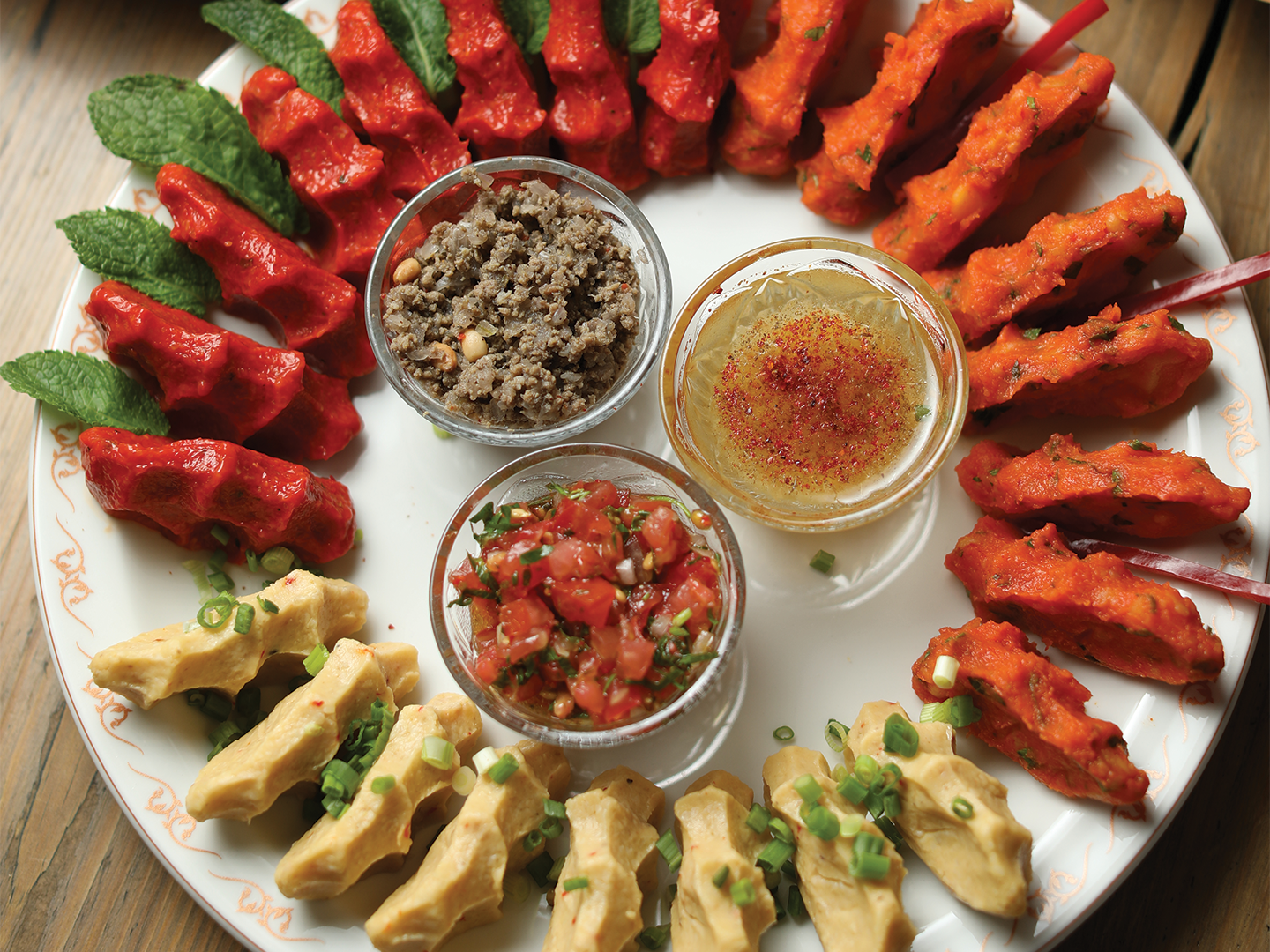
Mayrig
4/6 Amiryan St., Yerevan 0010, Armenia
First opened in Beirut in 2003 and exported to Yerevan only last year, Mayrig is the fulfilled promise of Lebanese-Armenian entrepreneur Aline Kamakian to a father gone too soon. Its kitchen blends Western Armenian cuisine with its Eastern counterpart and hints of Middle Eastern flavors to serve some of the best manti and sou beureg in town. An array of other appetizers, starters, mains and everything else in between is there to satisfy the most voracious appetite—all to the tune of a rich selection of wines.
Banner photo by Yeremyan Projects

